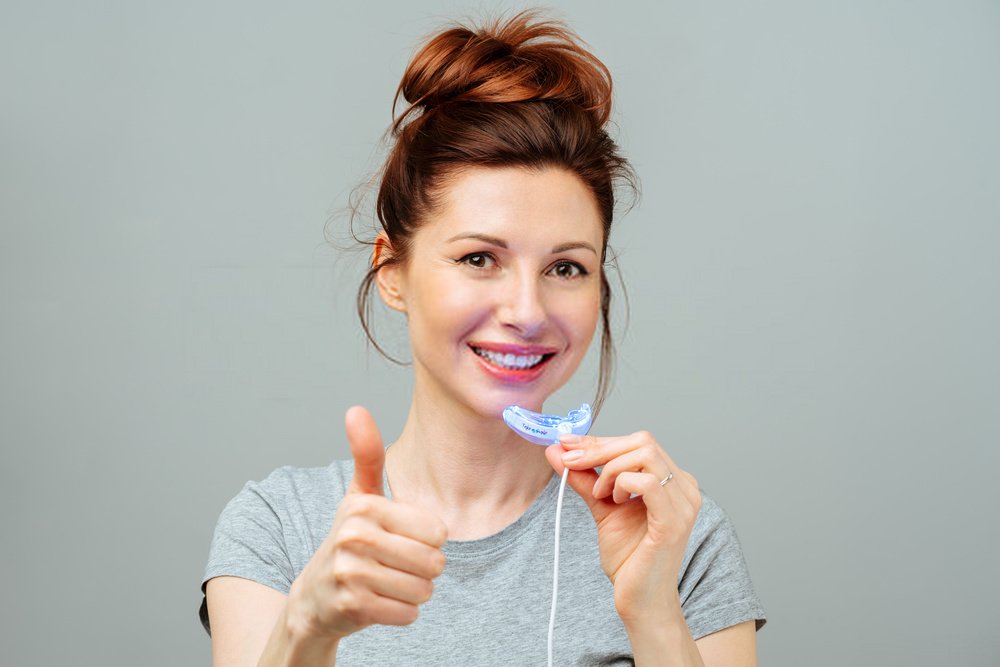Basically, whitening your teeth means lightening their color. The stain is physically removed or the tooth color is lightened by a chemical reaction.
Using an LED (light-emitting diode) light and a tooth-whitening agent, such as hydrogen peroxide, LED teeth whitening whitens teeth.
Is there a way to whiten teeth using LED lights?
Before LED teeth whitening, patients first apply a chemical agent with bleaching properties to their teeth. Whitening agents are activated and chemical reactions are started by LED lights.
Blue LED light penetrates the enamel and lifts stains when this interaction occurs.
Comparatively to other light sources, LEDs are highly efficient and long-lasting. It takes them just a few seconds to switch from warm-up to their highest intensity.
What does LED light do to whiten teeth?
By activating the whitening agent and starting the chemical reaction, LED light whitens teeth by activating a whitening agent.
Even if used alone, a LED light cannot change the teeth’ color. In combination with a whitening agent, it accelerates whitener reactions.
Are LED Teeth Whitening Lights Safe?
An at-home LED teeth whitening system has been developed that is safe to use. The current research indicates that LED teeth bleaching is safe and effective when done according to manufacturers’ instructions.
Getting your teeth whitened requires the advice of your dentist. Not everyone can benefit from teeth whitening. Whitening results are dependent upon lifestyle factors as well as the reason for your discolored teeth. A whitening treatment using LEDs works best on teeth that are yellow, rather than brown or greyish in color.
Whitening your teeth with blue light has pros and cons
LED Teeth whitening light supplier with blue light offers several advantages, such as:
- Better teeth whitening
- Having the convenience of whitening your teeth yourself instead of going to the dentist
- Affordability
- UV radiation-free
- It is less painful than going to the dentist for teeth whitening
There are also some downsides to LED teeth whitening using blue light:
- Discoloration causes vary according to their causes
- Compared to professionally done teeth whitening, where results are seen immediately
- Sensitivity of the teeth
- An irritant, such as a bleaching agent, may cause gums and tongue irritation by reacting with the tissues of the mouth, including the tongue.
- The teeth can suffer permanent damage from excessive tooth whitening treatments, excessive whitening agents, or staying in contact with whitening agents for too long.
We Are Trusted – Here’s Why
Our team of experts writes and researches all of this site’s medical content, including this guide and all product reviews. Every product that a NewMouth writer recommends and reviews is vetted. The team will do the following in cases where this cannot be done:
Comparing positive and negative product reviews
Ensure the safety and effectiveness of the products by speaking to company leaders
Make sure that customers are getting the best quality products at reasonable prices by investigating costs
To compare each product, read research studies
We thoroughly review all content before publishing it. A licensed dentist also reviews all content on NewMouth, including all content recommending products. Any recommendations our dentists disagree with are specifically flagged. Their professional standards prevent them from selling products that don’t meet them.
Our recommended products come with the American Dental Association (ADA) Seal of Acceptance. In addition to preventing gum disease, cavities, and other conditions of the mouth, these products are proven to be effective.
Our research ensures reputability when we recommend products without this seal of acceptance. This may include speaking with company leaders, reading hundreds of customer reviews, and ensuring they provide quality customer service.



